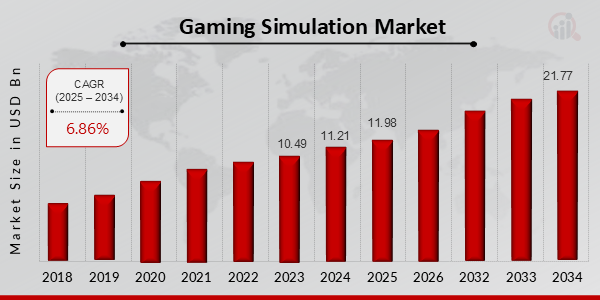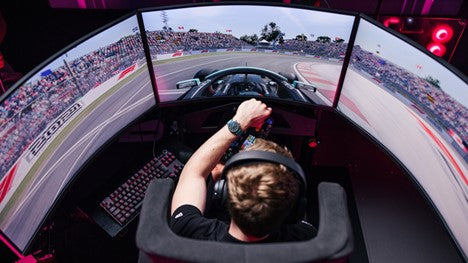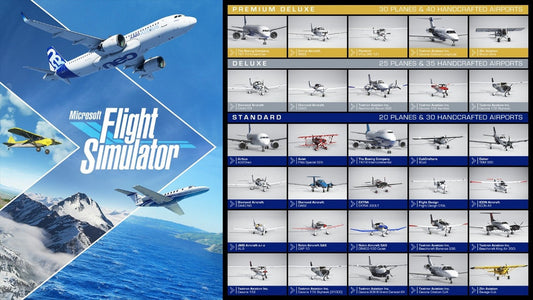The Future of Gaming Simulator Technology

The future of gaming simulator technology looks very exciting as the Gaming Simulation Market is growing real fast. For instance, in 2024, it was worth around USD 11.21 billion. And now, experts say it will grow to USD 11.98 billion by 2025 and reach around USD 21.77 billion by 2034. This shows a strong growth rate of 6.86% every year between 2025 and 2034, so we have every reason to believe that the future of gaming simulation looks bright.
But why the sudden rise, you may ask. Well, over the years, gaming simulators have changed a lot. In the past, they were basic and limited, but today, they offer high-quality graphics, real-life movements, and smart, intuitive controls. This makes them more realistic, and because of this, more people are enjoying them, both at home and at tournaments.
As such, in this article, we’ll talk about this soaring rise in popularity of gaming simulators and talk in detail about how the ever-evolving technology is shaping the future of gaming simulator technology.
Advancements Driving Gaming Simulation Forward

When we talk about the future of gaming simulator technology, it’s impossible not to notice how fast things are moving.
Just a few years ago, simulation games looked and felt much simpler. But now with powerful PCs, next-gen gaming systems, and cutting-edge software applications, game developers can create simulator games that not only look like but behave like the real world. Whether it be more detailed shadowing on a racing car or how a plane tips and elevates upon takeoff—the minutiae are becoming critical to match reality, more than ever before.
This is all thanks to giant leaps in graphics and processing power, which we all have witnessed in recent years. With PS5s and Xbox Series X systems, to elite gaming PCs, developers can now create simulator games that look and behave realistically. From environments and intricately designed trees to textures on racing cars and animation that's not choppy but smooth, these improvements make the whole experience more immersive for players.
But it’s not just about better visuals. Technologies like virtual reality (VR) and augmented reality (AR) have also taken gaming simulations to the next level. Unlike before, when gaming engines were designed to create immersive levels with the hope of eventually exciting players, now—especially with, for example, racing simulators, people can be on the road with a VR headset and feel it! Meanwhile, AR integrates the virtual gaming world on top of the real one so that, instead of a person experiencing something entirely virtual, they can now interact with certain digital gaming components on real-life surfaces, and they would respond accordingly.
Another major breakthrough is the use of artificial intelligence (AI) in gaming simulators. In older games, non-player characters (NPCs) followed simple rules. Game developers would create rules of play that made NPCs feel trapped in a loop. Yet, with AI technology now in hand, NPCs can think like us, learn from our play/trends, and respond as such. This results in smarter villains, games that conform to how people play, and realistic physics. All of this makes the gaming simulators feel more natural and personal, which, in turn, keeps players retention for longer periods of time.
And let’s not forget cloud gaming and subscription models, which are now actively rolling out in simulator games. Previously, gamers needed expensive hardware to run heavy simulation games. But now, with cloud gaming, they can stream high-quality simulators directly on their platforms, without the need for a costly setup. Plus, subscription services are making it way easier, and cheaper too, to try out different simulators. For example, instead of buying each simulator game separately, which can be anywhere from $20-$60, gamers can access a variety of simulation games with a subscription mode for a mere $5-$10 monthly fee.
All these advancements in technology have made the future of gaming simulation look bright and secure. And the research data from the MRFR Database and Analyst review further backs this claim.
The Role of eSports in Popularising Simulation Gaming
 If you've been keeping track of the gaming industry in the last few months, you know that eSports is bringing gaming simulations to the next level—and to the next, and the next. As competitive gaming grows, so too does the demand to fuel it with cutting-edge technology within the game simulation realm.
If you've been keeping track of the gaming industry in the last few months, you know that eSports is bringing gaming simulations to the next level—and to the next, and the next. As competitive gaming grows, so too does the demand to fuel it with cutting-edge technology within the game simulation realm.
One of the biggest advancements fueling this growth is the ability to game on multiplayer simulators. As more people log in to race, fly, or sport against virtually anyone around the world, the demand for more realistic and enjoyable technologies increases. This leads to more manufacturers working on graphics, physics, and controls as demanded by the growing multiplayer aspects.
Take, for example, the F1 Sim Racing World Championship 2025. This event recently featured a $750,000 prize pool for 12 races across three events, with thousands tuning in as viewers. This highlights that simulation gaming is no longer a side hobby; it’s practically become a serious eSport, giving sim racers a viable career opportunity to pursue in 2025 and beyond.
Another big name in simulation gaming is iRacing. Its Porsche TAG Heuer Esports Supercup is currently in the limelight. In this event, 30 sim racers participated to compete for a prize pool of $200,000 on laser-scanned virtual tracks to accurately portray real-world experiences.
Even football fans can get in on the action. The FC Pro 24 World Championship, part of the 2024 Esports World Cup, showed how simulation-based football can draw massive crowds. With a $1 million prize, it gave EA SPORTS FC 24 a huge boost.
All of this shows how eSports is shaping the future of gaming simulator technology. As more players join in and competitions get bigger, simulation games will only keep improving. The future of gaming simulation is not just bright—it’s already here, and it’s competitive.
What’s Next for Gaming Simulators?

As we look ahead, the future of gaming simulation is all set to become even more immersive and interactive.
For instance, neural networks are a new technology coming to gaming simulation in the near future. Neural networks refer to a composition of AI that allows NPCs to learn from your gameplay. As such, they constantly adjust to your gameplay, which makes them feel more real and personalized since they're continuously learning.
Another technology gaining traction is haptic feedback. In addition to feeling the vibration of a controller, people can now feel various new forms of impact due to advancements in tech, such as the Next Level Racing HF8 Pro Pad that allows players to feel every bump, turn, or impact in a game.
Full-body tracking is also a trend that’ll be implemented on a large scale not long from now. While many assume headsets are the only way to get involved with the gameplay simulation world, options like SlimeVR show that it's entirely possible for your body to be represented in virtual environments. So, for instance, you can use physical hand gestures in a VRChat or Beat Saber.
Moreover, gaming simulators are beginning to integrate with the metaverse as well. This means players can interact in shared virtual spaces, combining gaming with social experiences. AI-driven gameplay further enhances this by generating dynamic content and adapting scenarios in real-time, making each session unique.
Challenges and Limitations in Gaming Simulation Technology

Even though the future of gaming simulator technology looks bright, there are still a few challenges that need attention.
One major issue is hardware cost. High-end PCs, VR headsets, haptic gear, and motion setups can be very expensive. This makes it hard for many gamers, especially in developing countries, to enjoy the full simulator experience. While cloud gaming is helping a bit, full simulation setups are still out of reach for many.
Another challenge is achieving hyper-realism. Developers are trying to create simulations that feel just like real life, but it’s not easy. Realistic movements, natural AI reactions, and detailed physics need a lot of computing power—and not every system can handle that.
There’s also the struggle to balance performance, affordability, and user experience. A game might look amazing, but if it lags or requires expensive gear, it loses its appeal. On the other hand, cheaper versions often sacrifice quality.
So, while the future of gaming simulation is exciting, these barriers remind us that there’s still work to do to make simulators better and more accessible for everyone.
Conclusion
All in all, the future of gaming simulator technology is full of promise. With advancements in AI and VR in the works faster than ever and improvements in accessibility, gaming simulators will potentially be more captivating and entertaining in the future. While a few roadblocks hold things back, like pricing and specific hardware restrictions, integration with eSports, technological advancements, and gamer preferences are fostering market expansion.
One thing’s clear—simulation gaming is no longer just a trend, it's the next big leap in interactive entertainment. What do you think?





